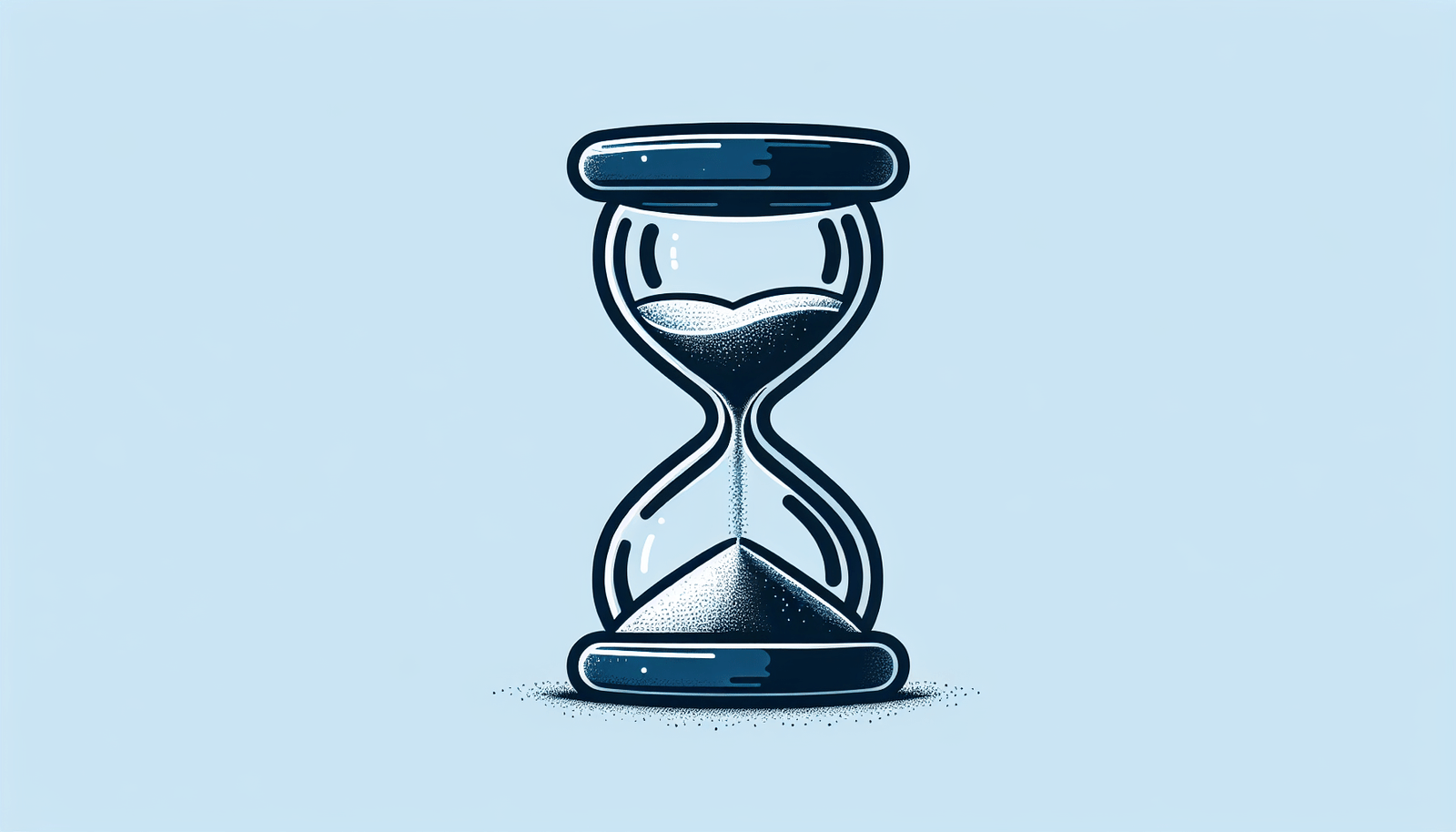If you’re looking to shed those extra pounds and have heard about the benefits of fasting for weight loss, you’re in the right place. In this article, we’ll provide you with valuable tips and strategies to ensure long-term success with your fasting journey. Whether you’re a novice or have tried fasting before, these practical suggestions will help you navigate the challenges and maximize your results. So, get ready to embark on a transformative and sustainable weight loss journey through fasting.

Understand the Basics of Fasting
Types of fasting
Fasting comes in various forms, each with its own approach and benefits. Some of the most common types include intermittent fasting, alternate day fasting, and extended fasting. Intermittent fasting involves restricting your eating window to a certain number of hours per day, while alternate day fasting involves fasting every other day. Extended fasting, on the other hand, involves not consuming any calories for longer periods of time, usually more than 24 hours.
Benefits of fasting for weight loss
Fasting can be an effective tool for weight loss, as it helps to create a calorie deficit and promote fat burning. It can also improve insulin sensitivity, reduce inflammation, and enhance mental clarity. Additionally, fasting has been shown to support autophagy, a cellular process that helps to remove damaged cells and promote healthy cell function.
Key principles of fasting
When it comes to fasting, there are a few key principles to keep in mind. First, it’s important to listen to your body and only fast if you feel it is right for you. Additionally, fasting should always be combined with a healthy and balanced diet to ensure adequate nutrient intake. It’s also crucial to ease into fasting gradually and stay hydrated throughout the fasting period.
Consult a Healthcare Professional
Importance of consulting a doctor or registered dietitian
Before embarking on any fasting journey, it’s essential to consult with a healthcare professional, such as a doctor or registered dietitian. They can assess your overall health, provide personalized advice, and monitor your progress throughout the fasting process. Their expertise will ensure that fasting is safe and appropriate for your individual needs.
Health considerations before starting a fast
While fasting can have numerous benefits, it may not be suitable for everyone. Certain health conditions, such as diabetes or eating disorders, may require modifications or supervision when fasting. It’s important to discuss any underlying health concerns with a healthcare professional to determine if fasting is the right choice for you.
Creating a personalized fasting plan
Once you have consulted with a healthcare professional, they can help you create a personalized fasting plan that aligns with your goals and health needs. This plan may include specific fasting methods, such as intermittent fasting or alternate day fasting, as well as guidelines for caloric intake and nutrient needs during non-fasting periods. A personalized plan will increase the likelihood of long-term success and minimize any potential risks.
Set Realistic Goals
Importance of setting realistic weight loss goals
Setting realistic weight loss goals is vital for long-term success. Rapid weight loss may not be sustainable or healthy, and it’s important to focus on gradual and steady progress. By setting realistic goals, you can maintain motivation and celebrate each milestone along the way.
Determining a healthy and achievable target weight
When setting weight loss goals, it’s crucial to consider what is healthy and achievable for your body. Factors such as height, body composition, and overall health should be taken into account. Consulting with a healthcare professional can provide guidance on determining a target weight that aligns with your specific circumstances.
Setting a reasonable timeframe for weight loss
Weight loss is not a race, and sustainable results take time. Setting a reasonable timeframe for weight loss will help you avoid crash diets or extreme measures that can be detrimental to your health. Aim for a gradual weight loss of 1-2 pounds per week, as this rate has been shown to be more sustainable and maintainable in the long run.

Choose the Right Fasting Method
Intermittent fasting
Intermittent fasting involves cycling between periods of fasting and eating. The most common approach is the 16/8 method, where you fast for 16 hours and have an 8-hour eating window. Intermittent fasting is flexible and can be adapted to fit different lifestyles, making it one of the most popular fasting methods for weight loss.
Alternate day fasting
Alternate day fasting entails fasting for 24 hours, either completely or limiting calorie intake to a specific amount. On non-fasting days, you can eat normally. This method can be challenging for some people, but it may be effective for weight loss if followed consistently.
Extended fasting
Extended fasting involves going without any calories for an extended period, usually 24 hours or more. It is important to approach extended fasting with caution and seek professional guidance, as it can be more challenging and may require monitoring for electrolyte imbalances or other potential complications.
Selecting the most suitable method for your lifestyle and preferences
Choosing the right fasting method depends on your lifestyle, preferences, and individual goals. Experimenting with different fasting methods and finding the one that suits you best can increase adherence and improve long-term success. Remember, finding a method that aligns with your lifestyle and preferences will make it easier to stick to your fasting routine.
Prepare Your Body for Fasting
Gradually reducing calorie intake
Before starting a fast, it can be beneficial to gradually reduce your calorie intake. This can help your body adjust to eating less and make the initial fasting period more manageable. Gradually reducing calorie intake over a period of several days can also minimize any potential side effects, such as headaches or fatigue.
Transitioning to a healthy diet before fasting
Transitioning to a healthy diet before fasting is essential because it ensures that you are receiving proper nutrition leading up to the fasting period. Focus on consuming whole, nutrient-rich foods such as fruits, vegetables, lean proteins, and whole grains. This transition will help optimize your body’s nutrient status and support your overall well-being.
Staying hydrated and maintaining electrolyte balance
Hydration is crucial during fasting, as water helps support cellular function and overall health. It’s important to drink enough water throughout the day to stay properly hydrated. Additionally, maintaining electrolyte balance is important, especially during extended fasting periods. Consider adding electrolyte-rich foods or supplements to your routine, as this can help prevent electrolyte imbalances and associated symptoms.
Manage Hunger and Cravings
Understanding the difference between hunger and cravings
Hunger and cravings are two distinct sensations that one may experience during fasting. Hunger is the physical sensation of needing to eat, while cravings are the intense desire for a specific type of food. Understanding the difference between the two can help you manage them effectively and make healthier choices.
Tips for controlling hunger during fasting
Several techniques can help control hunger during fasting. Drinking water or calorie-free beverages can help curb hunger pangs. Consuming high-fiber foods, such as vegetables or whole grains, can also provide a feeling of fullness. Engaging in distractions, such as going for a walk or practicing a hobby, can help redirect your attention away from food and reduce hunger sensations.
Healthy ways to cope with food cravings
Food cravings during fasting can be challenging to manage, but there are healthy strategies that can help. Engaging in mindfulness techniques, such as deep breathing or meditation, can help you become more aware of your cravings and reduce their intensity. Additionally, finding alternative activities or enjoyable hobbies can help distract from cravings and reduce the urge to eat.
Ensure Nutritional Adequacy
Including a variety of nutrient-dense foods in your meals
When following a fasting plan, it’s essential to ensure that your meals are packed with a variety of nutrient-dense foods. Focus on incorporating fruits, vegetables, lean proteins, whole grains, and healthy fats into your diet. These foods will provide the essential vitamins, minerals, and macronutrients your body needs to thrive.
Understanding essential macronutrients and micronutrients
Macronutrients, such as carbohydrates, proteins, and fats, are crucial for energy production and overall bodily functions. It’s important to understand the appropriate balance of these macronutrients for your individual goals and health needs. Additionally, micronutrients, including vitamins and minerals, play a vital role in supporting various physiological processes, so it’s important to obtain them through a balanced and varied diet.
Supplementing if necessary
Supplements may be necessary for some individuals during fasting to ensure nutritional adequacy. It’s important to consult with a healthcare professional to determine if any specific supplements are needed based on your unique circumstances. They can assess your nutrient status and recommend appropriate supplements to support your overall health during fasting.
Monitor Progress and Adjust as Needed
Tracking weight loss and body measurements
Tracking your weight loss progress and body measurements can be a useful tool to stay motivated and make adjustments as needed. Keep a record of your weight, measurements, and body fat percentage, if possible. Monitoring these changes over time can help you assess your progress and make informed decisions about your fasting routine.
Modifying fasting patterns based on results
As you progress in your fasting journey, it’s important to evaluate the effectiveness of your fasting patterns. If you’re not experiencing the desired weight loss or other health benefits, you may need to modify your fasting schedule or method. Consulting with a healthcare professional can provide valuable insights and guidance on adjusting your fasting routine to optimize results.
Seeking professional guidance if progress stalls
If you find that your progress has stalled or you’re facing challenges during your fasting journey, don’t hesitate to seek professional guidance. A healthcare professional or registered dietitian can provide support, identify any potential issues, and help you troubleshoot any obstacles you may be encountering. They can provide personalized advice to help you overcome plateaus and achieve your long-term weight loss goals.
Exercise and Physical Activity
Incorporating exercise into your fasting routine
Exercise can be a valuable addition to your fasting routine, as it can enhance weight loss, improve cardiovascular health, and increase muscle tone. When incorporating exercise, consider the timing and intensity of your workouts. Some people may prefer to exercise during the eating window, while others may find exercising in a fasted state more comfortable.
Choosing suitable exercises for weight loss
When it comes to weight loss, a combination of aerobic exercise and strength training is ideal. Incorporating activities such as brisk walking, jogging, cycling, or swimming can help burn calories and support overall weight loss. Strength training exercises, such as weightlifting or bodyweight exercises, can help build lean muscle mass and increase metabolism.
Benefits of combining fasting with physical activity
Combining fasting with physical activity can have several benefits. When in a fasted state, the body may utilize stored fat as a source of fuel during exercise, potentially enhancing fat burning. Additionally, physical activity can help preserve muscle mass during weight loss and improve overall cardiovascular fitness. Regular exercise can also have positive effects on mood and mental well-being, which can support your long-term weight loss journey.
Establish Sustainable Habits
Transitioning from fasting to long-term healthy eating habits
Although fasting can be an effective tool for weight loss, it’s important to transition to long-term healthy eating habits once you’ve achieved your goal weight. This transition involves gradually reintroducing foods in a balanced manner and maintaining portion control. Focus on consuming whole, nutrient-dense foods and listen to your body’s hunger and satiety cues.
Developing a balanced and mindful approach towards food
Developing a balanced and mindful approach towards food is key to long-term success. Avoid labeling foods as “good” or “bad” and aim for a balanced diet that includes all food groups in moderation. Practice mindful eating techniques, such as eating slowly and savoring each bite, to enhance your relationship with food and promote a healthier mindset.
Creating a regular eating schedule
Establishing a regular eating schedule can help maintain the progress you’ve achieved through fasting. Consistency in meal times can help regulate appetite and prevent mindless snacking or overeating. Aim for three balanced meals and, if necessary, a few small snacks throughout the day to keep your energy levels stable and support your overall well-being.
In conclusion, fasting can be an effective strategy for weight loss when approached in a safe and mindful manner. Understanding the basics of fasting, consulting with healthcare professionals, setting realistic goals, choosing the right fasting method, preparing your body, managing hunger and cravings, ensuring nutritional adequacy, monitoring progress, incorporating exercise, and establishing sustainable habits are all important factors for long-term success. By taking a comprehensive and personalized approach, you can reap the benefits of fasting while maintaining a healthy and balanced lifestyle.








